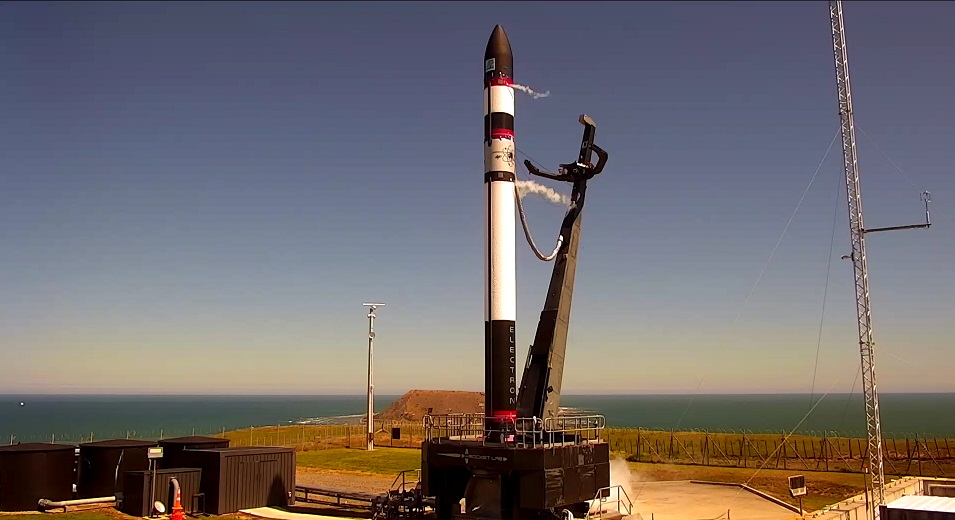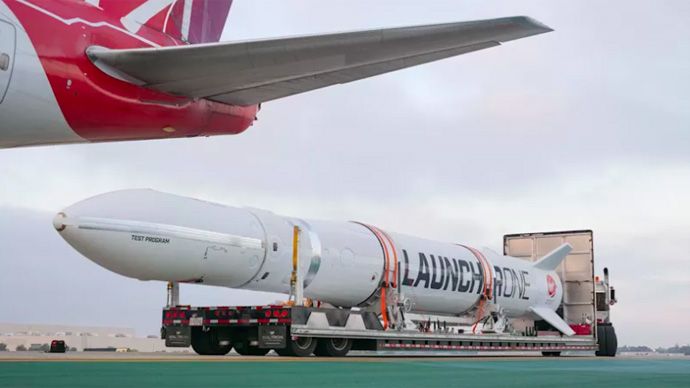It seems like every month, a new story appears announcing the discovery of thousands of new asteroids. Tracking these small body objects from ground and even space-based telescopes helps follow their overall trajectory. But understanding what they’re made of is much more difficult using such “remote sensing” techniques. To do so, plenty of projects get more up close and personal with the asteroid itself, including one from Dr. Sigrid Elschot and her colleagues from Stanford, which was supported by NASA’s Institute for Advanced Concepts back in 2018. It uses an advanced suite of plasma sensors to detect an asteroid’s surface composition by utilizing a unique phenomenon – meteoroid impacts.
Continue reading “Swarms of Orbiting Sensors Could Map An Asteroid’s Surface”IBM Space Tech Wants to “Democratize Space” with ENDURANCE.
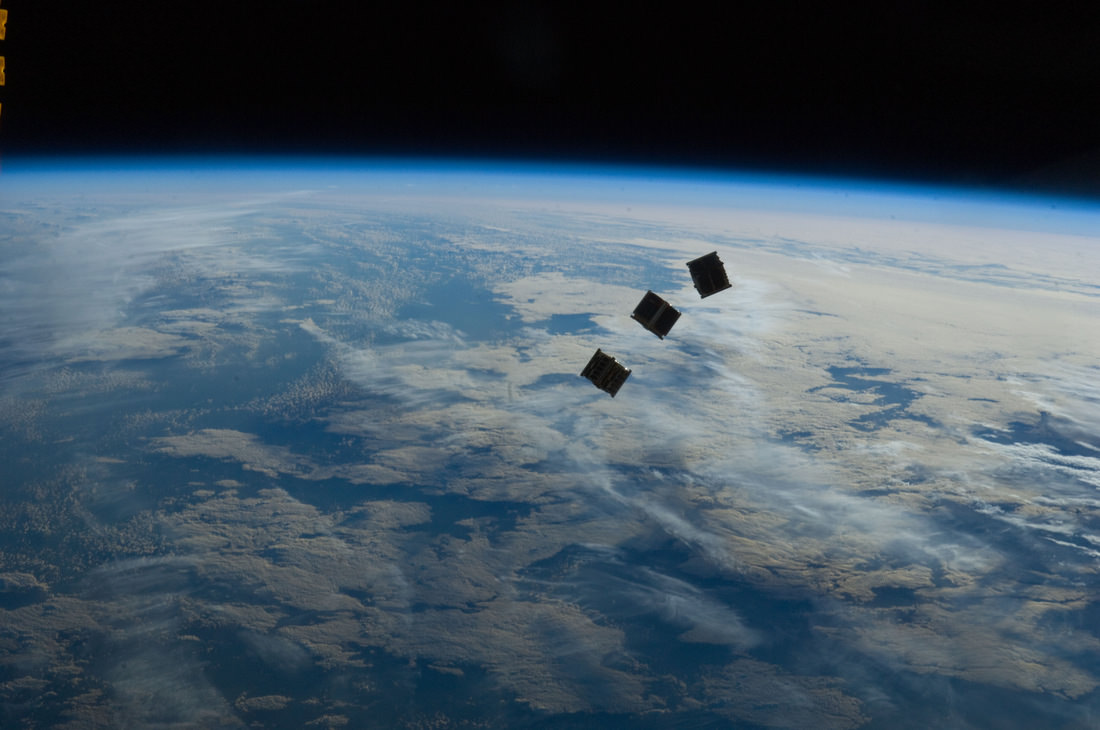
Between the rise of the commercial space industry and the proliferation of agencies and programs, it is clear that we live in a new space age. A cornerstone of this new age is how reusable rockets, small satellite technology, and other advances are reducing the cost of launching payloads to orbit. This, in turn, increases access to space and allows more people and organizations to participate in lucrative research.
In January of 2020, IBM chose to build on its many years of working with the space sector by launching its own commercial space venture known as IBM Space Tech. In early 2022, IBM Space Tech will be launching its first CubeSat space mission, named ENDURANCE, to Low Earth Orbit (LEO). By leveraging IBM/Red Hat software and the IBM Cloud, this CubeSat will give students all over the world access to space!
Continue reading “IBM Space Tech Wants to “Democratize Space” with ENDURANCE.”Virgin Orbit Successfully Launches a Batch of Satellites From an Airplane
On Sunday, January 17th, Virgin Orbit conducted the second launch test of its LauncherOne rocket, which the company will use to deploy small satellites to orbit in the coming years. The mission (Launch Demo 2) went smoothly and validated the company’s delivery system, which consists of the rocket air launching from a repurposed 747-400 (named Cosmic Girl).
It also involved the successful deployment of 10 CubeSats which were selected by NASA’s Launch Services Program (LSP) as part of the agency’s CubeSat Launch Initiative (CSLI). The event began when Cosmic Girl took off from the Mojave Air and Space Port at approximately 10:50 A.M. PST (01:50 P.M. EST) and flew to a location about 80 km (50 mi) south of the Channel Islands in the Pacific Ocean.
Continue reading “Virgin Orbit Successfully Launches a Batch of Satellites From an Airplane”RocketLab Recovers a First-Stage Booster for the First Time: “Return to Sender”
In recent years, one of the most impressive developments for space exploration has been the rise of the commercial space industry (aka. NewSpace). Beyond fulfilling contracts with space agencies like NASA to provide commercial and crewed launch services, private aerospace companies are also fostering innovation that is helping to reduce the cost of sending payloads to space.
Take RocketLab, the US/NZ-based small satellite launch company that has broken new ground with its Electron rocket. In a further bid to reduce the costs of individual launches, RocketLab announced last year that it would begin recovering and reusing the spent boosters of its rockets. Recently, the company took a big step by successfully retrieving the first stage of an Electron after it delivered a payload to orbit.
Continue reading “RocketLab Recovers a First-Stage Booster for the First Time: “Return to Sender””Virgin Orbit Shows off its “Launcher One”, a Rocket Carried by an Airplane
The commercial space sector is about to get a little more crowded. SpaceX and Blue Origin have created headlines with their ongoing development of reusable launch vehicles. Now Virgin Orbit‘s “Launcher One” is carving out its own niche in the commercial space market, as an efficient, flexible launcher of small satellites.
Continue reading “Virgin Orbit Shows off its “Launcher One”, a Rocket Carried by an Airplane”
This is the Strangest Idea Ever for a Spacecraft Propulsion System: Ferrofluids

When it comes to the future of space exploration, some truly interesting concepts are being developed. Hoping to reach farther and reduce associated costs, one of the overarching goals is to find more fuel-efficient and effective means of sending robotic spacecraft, satellites and even crewed missions to their destinations. Towards this end, ideas like nuclear propulsion, ion engines and even antimatter are all being considered.
But this idea has to be the strangest one to date! It’s known as a ferrofluid thruster, a new concept that relies on ionic fluids that become strongly magnetized and release ions when exposed to a magnetic field. According to a new study produced by researchers from the Ion Space Propulsion Laboratory at Michigan Tech, this concept could very well be the future of satellite propulsion.
This study, which was recently published in the journal Physics of Fluids, presents an entirely new method for creating microthrusters – tiny nozzles that are used by small satellites to maneuver in orbit. Thanks to improvements in technology, small satellites – which are typically defined as those that weight less than 500 km (1,100 lbs) – can perform tasks that were once reserved for larger ones.
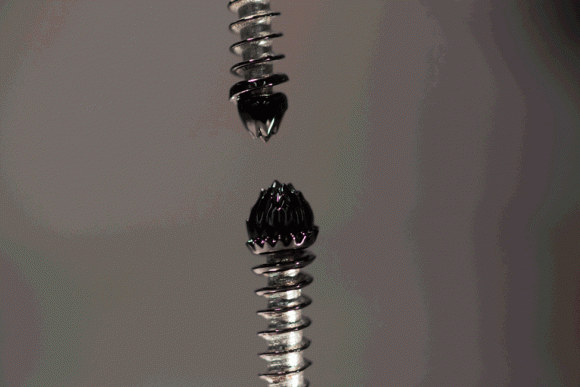
As such, they are making up an increasingly large share of the satellite market, and many more are expected to be launched in the near future. In fact, it is estimated that between 2015 and 2019, over 500 small satellites will be launched to LEO, with an estimated market value of $7.4 billion. Little wonder then why researchers are looking at various types of microthrusters to ensure that these satellites can maneuver effectively.
While there are no shortage of possibilities, finding the one that balances cost-effectiveness and reliability has been difficult. To address this, an MTU research team began conducting a study that considered ferrofluids as a possible solution. As noted, ferrofluids are ionic liquids that become active when exposed to a magnetic field, forming peaks that emit small amounts of ions.
These peaks then return to a natural state when the magnetic field is removed, a phenomena known as Rosenweig instability. Led by Brandon A. Jackson – a doctoral candidate in mechanical engineering at Michigan Technological University – the MTU research team began to consider how this could be turned into propulsion. Other members included fellow doctoral candidate Kurt Terhune and Professor Lyon B. King.
Prof. King, the Ron & Elaine Starr Professor in Space Systems at Michigan Tech, has been researching the physics of ferrofluids for many years, thanks to support provided by the Air Force Office of Scientific Research (AFOSR). In 2012, he proposed using such ionic fluids to create a microthruster for modern satellites, based on previous studies conducted by researchers at the University of Sydney.
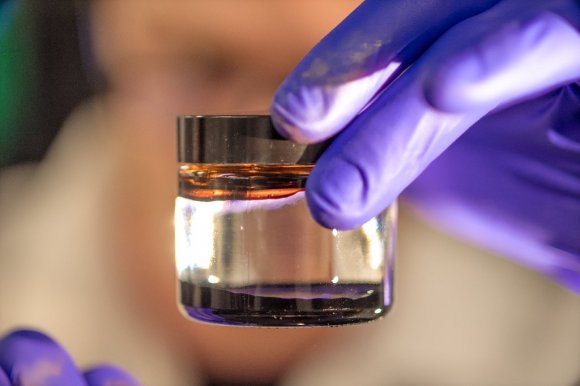
As he explained in a MTU press release, this method offers a simple and effective way to create a reliable microthruster:
“We’re working with a unique material called an ionic liquid ferrofluid. When we put a magnet underneath a small pool of the ferrofluid, it turns into a beautiful hedgehog structure of aligned peaks. When we apply a strong electric field to that array of peaks, each one emits an individual micro-jet of ions.”
With King’s help, who oversees MTU’s Ion Space Propulsion Laboratory, Jackson and Tehrune began conducting an an experimental and computational study on the dynamics of the ferrofluid. From this, they created a computational model that taught them much about the relationships between magnetic, electric and surface tension stresses, and were even surprised by some of what they saw.
“We wanted to learn what led up to emission instability in one single peak of the ferrofluid microthruster,” said Jackson. “We learned that the magnetic field has a large effect in preconditioning the fluid electric stress.”
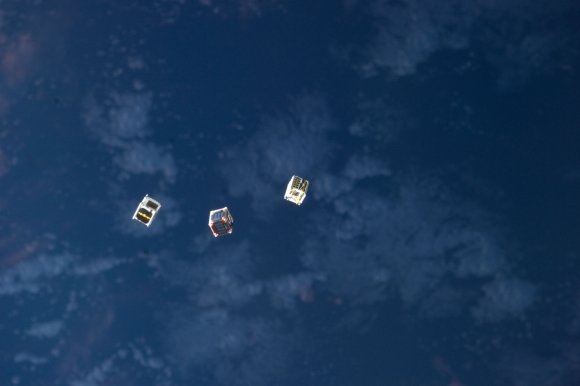
Ultimately, what they had created was a model for an electrospray ionic liquid ferrofluid thruster. Unlike conventional electrospray thrusters – which generate propulsion with electrical charges that send tiny jets of fluid through microscopic needles – a ferrofluid electrospray thruster would be able to do away with these needles, which are expensive to manufacture and vulnerable to damage.
Instead, the thruster they are proposing would be able to assemble itself out of its own propellant, would rely on no fragile parts, and would essentially be indestructible. It would also present advantages over conventional plasma thrusters, which are apparently unreliable when scaled down for small satellites. With the success of their model, the AFOSR recently decided to award King a second contract to continue studying ferrofluids.
With this funding secured, King is confident that they can put what they learned with this study to good use, and scale it up to examine what happens with multiple peaks. As he explained:
“Often in the lab we’ll have one peak working and 99 others loafing. Brandon’s model will be a vital tool for the team going forward. If we are successful, our thruster will enable small inexpensive satellites with their own propulsion to be mass produced. That could improve remote sensing for better climate modeling, or provide better internet connectivity, which three billion people in the world still do not have.”
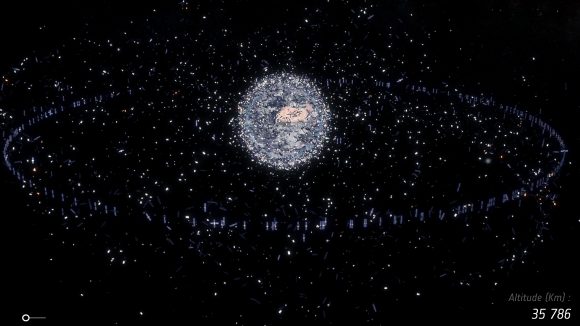
Looking ahead, the team wants to conduct experiments on how an actual thruster might perform. The team has also begun working with Professor Juan Fernandez de la Mora of Yale University, one of the world’s leading experts on electrospray propulsion, to help bring their proposal to fruition. Naturally, it will take many years before a prototype is ready, and such a thruster would likely have to be able to execute about 100 peaks to be considered viable.
Nevertheless, the technology holds promise for a market that is expected to grow by leaps and bounds in the coming years and decades. Facilitating everything from worldwide internet access and telecommunications to scientific research, there is likely to be no shortage of smallsats, cubesats, nanosats, etc. taking to space very soon. They will all need to have reliable propulsion if they want to be able to stay clear of each other do their jobs!
Michigan Tech also has patents pending for the technology, which has applications that go beyond propulsion to include spectrometry, pharmaceuticals, and nanofabrication.
Further Reading: MTU, Physics of Fluids



